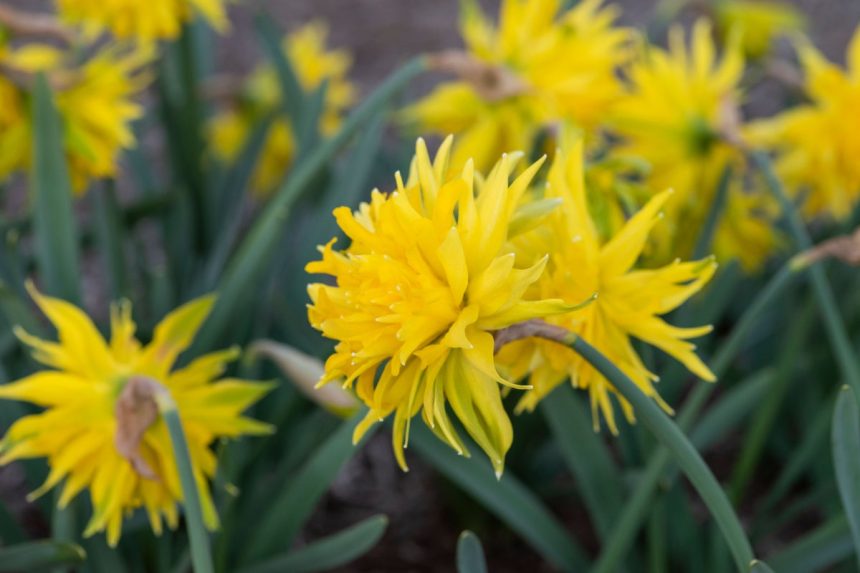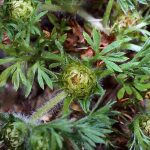Your support helps us to tell the story
From reproductive rights to climate change to Big Tech, The Independent is on the ground when the story is developing. Whether it’s investigating the financials of Elon Musk’s pro-Trump PAC or producing our latest documentary, ‘The A Word’, which shines a light on the American women fighting for reproductive rights, we know how important it is to parse out the facts from the messaging.
At such a critical moment in US history, we need reporters on the ground. Your donation allows us to keep sending journalists to speak to both sides of the story.
The Independent is trusted by Americans across the entire political spectrum. And unlike many other quality news outlets, we choose not to lock Americans out of our reporting and analysis with paywalls. We believe quality journalism should be available to everyone, paid for by those who can afford it.
Your support makes all the difference.
As the RHS launches Daffodil Diaries, a campaign asking people to help it map the UK’s daffodils and locate three rare or historically significant varieties, it’s worth considering growing some unusual varieties of your own.
The charity is asking people to log where daffodils are blooming in their area alongside basic information such as colour, type and height, to identify what is growing where and over time track flowering as our climate changes.
For those looking to grow something a bit different, Kálmán Könyves, principal scientist in the cultivated plant diversity team at the RHS, suggests five daffodils worthy of any garden:
Narcissus ‘Rip van Winkle’
This was introduced commercially in 1884 but is probably even older. They are relatively short at 17cm but their starry double flowers with many pointed bright yellow petals mix well with other small spring bulbs such as anemones and grape hyacinths.
Narcissus ‘Fairy Chimes’
This fragrant variety has four to six scented flowers with reflexed petals per stalk and is best enjoyed in pots although robust enough for beds and borders. Although ‘Fairy Chimes’ is not as popular as it was, both N. jonquilla and N. triandrus cultivars remain highly popular and many good garden plants are available.
Narcissus poeticus
The pheasant’s eye or poet’s daffodil is among the last to flower, opening in early May. Strikingly tall at 50-60cm, it is elegant, scented and adds delicate charm to grassy areas and to the rear of borders. It is grown commercially in France and Holland for the perfume industry. It’s a bit tall for pots, so if you’re looking for a container daffodil, go for the similar but slightly shorter Narcissus ‘Actaea’, which at 40cm is preferable.
Narcissus papyraceus
Also known as paperwhites, these need no cold period before they flower. Most narcissi measure winter chill (2-12C) and are only able to flower once a threshold has been passed, typically six to 12 weeks of winter weather. Because Narcissus papyraceus can flower with no chilling, they are often sold to be planted in the autumn to flower at Christmas, typically taking about a month to flower. Their powerful scent is not to everyone’s taste.
Narcissus ‘King Alfred’
This was one of the original yellow trumpet daffodils as we now know it. Introduced in 1899 by John Kendall and recognised by the Royal Horticultural Society by a ‘First-class Certificate’, it was widely grown until the 1950s when it was superseded by other varieties. The original ‘King Alfred’ now is hardly found, but the big yellow trumpet daffodils that dominate the cut flower trade are its natural followers. Good widely sold alternatives include ‘Brabazon’, ‘Mando’ and ‘Standard Value’. Plant in lawns for high impact or in cut flower beds for display inside.
How to grow
Daffodils, or narcissus to give them their Latin name, are simple to grow, with bulbs planted in late summer and autumn or bought in bud from garden centres in spring.
Any reasonable garden soil in full sun or light shade will suit them. If the soil is compacted, loosen it with a fork. For pots, plant at one third of the pot depth deep using a peat-free potting compost in pots with drainage holes. Don’t let pots dry out or your flowers will fail.
Garden daffodils usually need no feeding or watering when grown in the soil. Container grown ones appreciate fortnightly liquid feed until the foliage dies down.
Plants need their leaves after flowering to make flower buds for the following year so let them die down naturally or allow at least six weeks after flowering before they are severed or mown.
Rake over bare soil areas where daffodils are grown to fill in holes left by falling foliage, to prevent bulb flies accessing the bulbs to lay eggs. Alternatively apply a thick layer of organic matter.
Some daffodil plantings die out over a few years and replacement bulbs are bought. Others multiply and, if congested, dig up in summer, once the foliage turns like straw, and replant with more space between the bulbs.
The RHS notes that although daffodils have rarely caused any harm, they are potentially harmful if eaten and are a skin irritant. Wear gloves when handling the bulbs and cut flowers.







